#mixtecs
Text
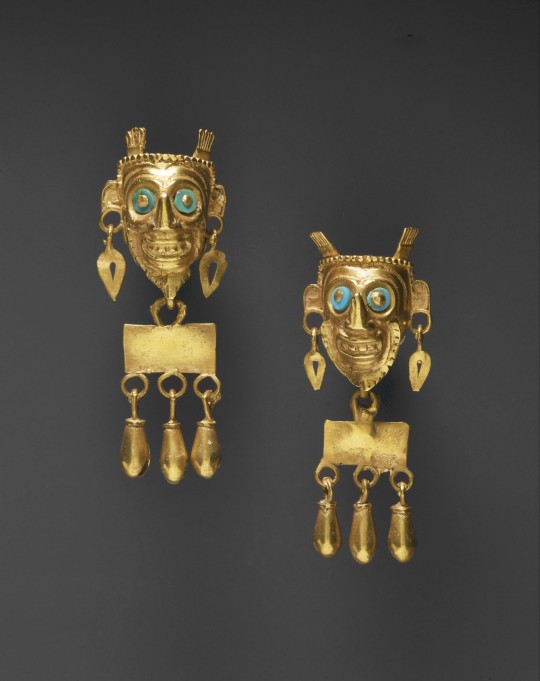
~ Pair of Earrings.
Culture: Mixtec
Period: Postclassic
Date: A.D. 900-1520
Medium: Gold, turquoise
#history#museum#archeology#archaeology#jewelry#10th century#16th century#mixtec#Postclassic#gold#turquoise#pair of earrings#a.d. 900#a.d. 1520
772 notes
·
View notes
Text
Na'yivi - Person

Nayivi means specifically "Person" My grandparents say it doesn't have to mean "Homo-sapien" or "Human being"
A tree could be a Nayivi as much as a human being could, and I like that distinction.
A strange alien creature could come from the skies or from beyond the stars and could be respected and as beloved a person all the same.
Its a sweet thought.
Next page: Itchi - Path
143 notes
·
View notes
Text
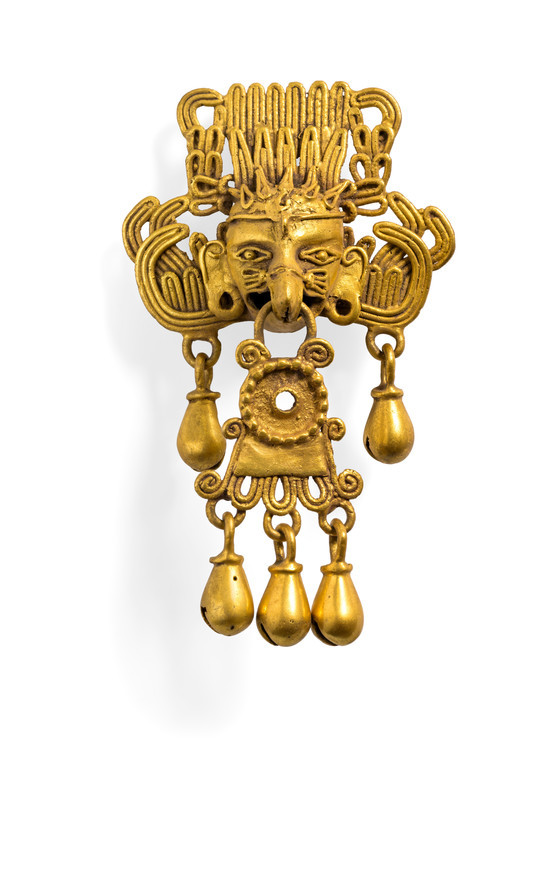
Gold pendant, Mixtec, 1100 - 1500 AD
from The LA County Museum of Art
251 notes
·
View notes
Text

Pair of Earrings
Mixtec, Postclassic, 900-1520 CE
To the Aztecs, the hummingbird was revered for its association with the Mexica tribal patron deity, Huitzilopochtli, “Hummingbird on the Left” or “Hummingbird to the South,” who oversaw their journey to Tenochtitlan from their mythic homeland, Aztlán. In establishing Tenochtitlan, the Mexica honored Huitzilopochtli with one of the two temples atop the pyramid of the Templo Mayor in the main ritual precinct of Tenochtitlan. Few sculpted images of this deity survive, and in the documentary sources he is often depicted as a priest or impersonator wearing a hummingbird helmet and a costume appropriate to the god.
331 notes
·
View notes
Photo
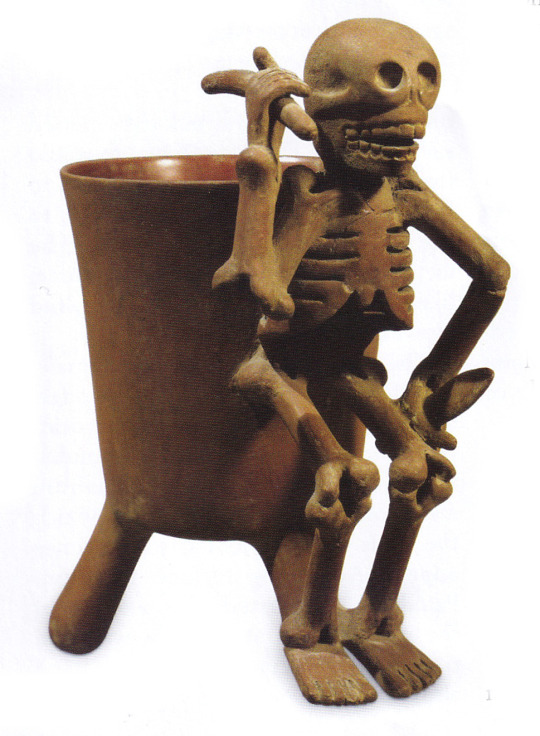
A gruesome Mixtec drinking cup from Zaachila, Mexico, is intended to remind drinkers of their mortality.
2K notes
·
View notes
Photo

Itzcacalotl cosplaying as the glyph of a place named Cacalotepec ("Crow Mountain"), from the Codex Nuttall.
202 notes
·
View notes
Text

Mask of the rain god Tlaloc
Mixtec (modern state of Oaxaca, Mexico); c. 1300-1500 CE; stone, turquoise, and shell; 13.5 x 11.5 x 5.5cm
Currently in the collection of the St. Louis Art Museum (St. Louis, Missouri, USA), accession no. 96:1968
#archaeology#art#isaac.txt#indigenous#american archaeology#native american#mixtec#st. louis art museum
8 notes
·
View notes
Photo
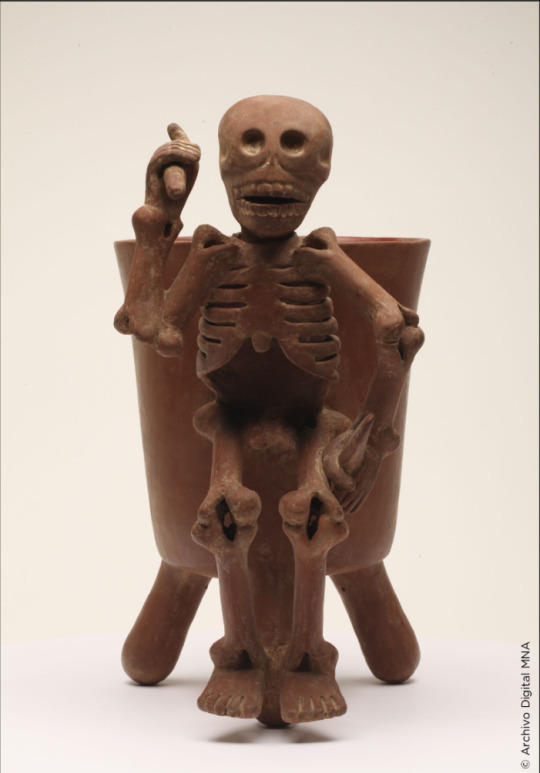
#Mixteca#Mixtec#Mixteco#Mexico#indigena#muerta#calavera#indigenous#pottery#vaso#cup#skeleton#death#prehispanic#prehispánico#mesoamerica
93 notes
·
View notes
Photo
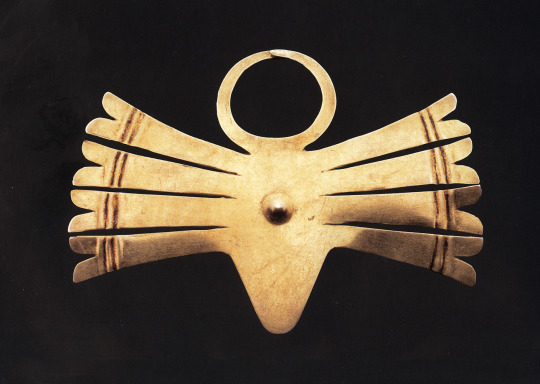
Butterfly nose pendant, Mixtec Gold Artifacts (https://www.latinamericanstudies.org/mixtec-gold.htm)
133 notes
·
View notes
Text
Noô - Face

Noô!!!! sounds exactly like Nuu!!! or city!!! I used to think they were the same thing, and worked as like a metaphor for like how places are full of faces too! human faces, and maybe other faces too.
Except the last O in NOO is on a lower tone! pronounced relatively lower in the throat than the first O which is a "Mid" tone!
Try it...
You just spoke a tonal language!
Next page: Na'yivi - Person
126 notes
·
View notes
Text

Gold and jade pectoral, Mixtec, circa 1200-1519
from The Cleveland Museum of Art
967 notes
·
View notes
Text

Bead in the Form of an Animal Head
Mixtec, Postclassic, general, 900-1520 CE
The coyote had a dual identity in the Aztec mind, one with rather more sinister implications. It was respected for being cunning, astute; in hunting it is quite as astute as a man. But it is in every way diabolic, exacting revenge for being thwarted in its pursuits, but also fair-minded, and could be grateful and appreciative by repaying an act of kindness with its own sort of generosity. It seems fitting that the greatest of all Aztec kings was named Fasting Coyote (Nezahualcoyotl in Nahuatl; ruled Texcoco ca. ad 1433–72). As his name implies, this king was astute and cunning, and a survivor as a long-term ally of his cousins, the rulers of Tenochtitlan. This small ornament may represent a coyote, and would call to mind the great fifteenth-century ruler.
164 notes
·
View notes
Photo
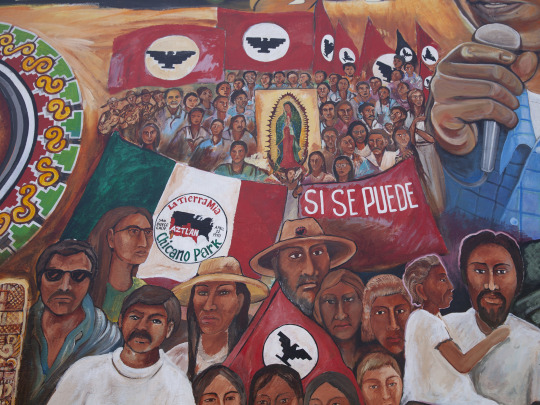
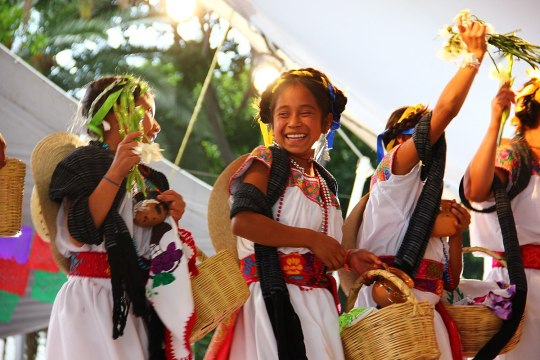





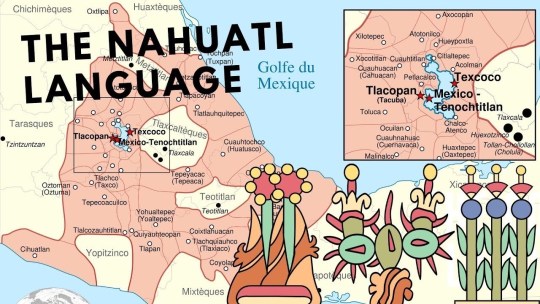
Chicano or Chicana is a chosen identity for many Mexican Americans in the United States.
Chicano was a classist and racist slur used toward low-income Mexicans that was first reclaimed in the 1940s among youth who belonged to the Pachuco subculture. By the 1960s, Chicano was widely reclaimed to express political empowerment, ethnic solidarity, and pride in being of Indigenous descent (with many using the Nahuatl language).

Chicano developed its own meaning separate from Mexican American identity. Chicano Movement leaders expressed solidarity with the African political struggle and collaborated with the Black Power movement. Chicano youth in barrios rejected cultural assimilation into whiteness and embraced their own identity and worldview as a form of empowerment and resistance.

Prominent journalist Rubén Salazar defined a Chicano as "a Mexican-American with a non-Anglo image of himself

In Mexico's Indigenous regions, Indigenous people refer to members of the non-indigenous majority as mexicanos, referring to the modern nation of Mexico. Among themselves, the speaker identifies by their pueblo (village or tribal) identity, such as Mayan, Zapotec, Mixtec, Huastec, or any of the other hundreds of indigenous groups. A newly emigrated Nahuatl speaker in an urban center might have referred to his cultural relatives in this country, different from himself, as mexicanos, shortened to Chicanos or Xicanos.
#mixtec#huatec#mayan#zapotec#chicanos#xicanos#mexican#mexico#nahuatl#kemetic dreams#asian#asian american
142 notes
·
View notes
Text
All these Mikus makes me want to draw my own version
3 notes
·
View notes


